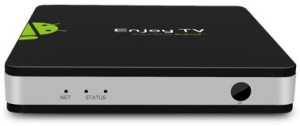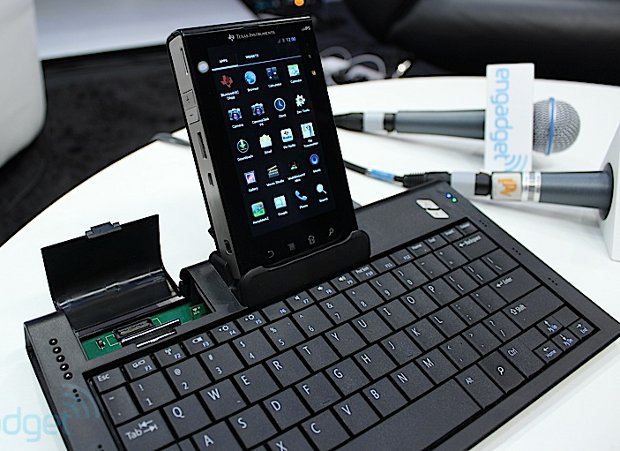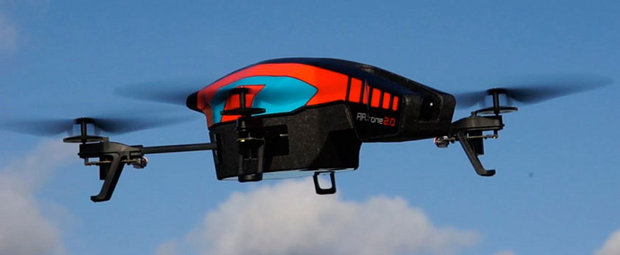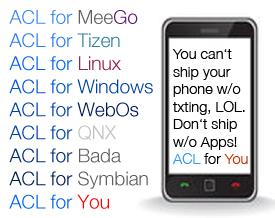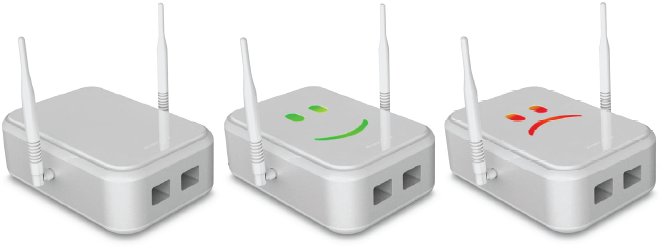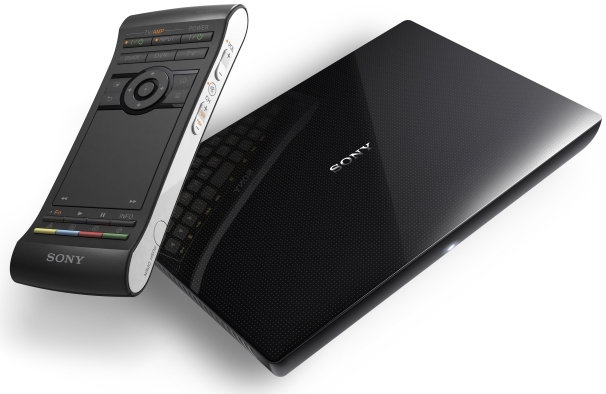Geniatech showcased the TV Box Nano2 ATV510 at CES 2012. This media player is powered by an AMLogic single core Cortex A9 processor (possibly Amlogic AML8726-M) with 512 MB RAM, 2GB Flash and featuring 2 USB ports, 1 microSD slot, a 10/100M Ethernet port and built-in Wifi. The remote, named AiRemote, is an RF remote with accelerometer and gyrometer. The device runs Android 4.0.1, and the company plans to port Google TV 2.0 to their media player soon. This STB should available in Europe and the US in March 2012 at an undisclosed price. Geniatech page for the ATV510 (http://www.geniatech.com/pa/atv510.asp) is currently not working, but you can have a look at the ATV500 running Android 2.3 to get details about the previous model. Jean-Luc Aufranc (CNXSoft)Jean-Luc started CNX Software in 2010 as a part-time endeavor, before quitting his job as a software engineering manager, and starting to write daily news, […]
Texas Instruments OMAP 5 Reference Design
Texas Instruments announced it was developing the OMAP 5, the first Cortex A15 processor, in February 2012. This year at CES 2012, Texas Instruments unveiled OMAP 5-based reference design / development platform running Android 4.0.1 to Engadget. Remi El-Ouazzane, VP of OMAP at Texas Instruments, explains: “This is the greatest platform on Earth right now… way ahead of Apple, and it’s the first Cortex-A15 (which runs 2x faster than the Cortex-A9) product on the market. When running two Cortex-A15 chips at 800MHz, it’s more or less the same performance as running two Cortex-A9s at 1.5GHz. You’ll see [commercially available products] ramping up with this stuff in late 2012 or early 2013. We are also running Windows 8 on the latest OMAP; it runs perfectly well, and we’ve been working very closely with Microsoft. We’re working on multiple form factors — tablets, thin-and-lights — and we think ARM is going to […]
Google Launches Android Design Website for Developers
Android 4.0 brings quite a few enhancements to the UI framework with new interactions and styles that let developers create Android apps that are simpler and more beautiful than ever before. To help designer and developers produce better looking apps for Android, Google has launched Android Design website, where it is possible to learn about principles, building blocks, and patterns for creating Android user interfaces. The website is divided into 4 main sections: Getting Started Creative Vision Design Principles UI Overview Style Devices and Displays Themes Touch Feedback Metrics and Grids Typography Color Iconography Writing Style Patterns Gesture App Structure Navigation Action Bar Multi-pane Layouts Swipe Views Selection Notifications Compatibility Pure Android Building Blocks Tabs Lists Grid Lists Scrolling Spinners Buttons Text Fields Seek Bars Progress & Activity Switches Dialogs Pickers Google also announced they would be added more resources over time. Visit Android Design website for details. Jean-Luc Aufranc […]
Parrot AR.Drone 2.0: Linux based Augmented Reality Helicopter
Parrot announced a revised version of its Linux-based Parrot AR Drone “quadricopter” flying drone at CES 2012. The drone can now be operated with any Android device such as smartphones and tablets, whereas the previous version could only be controlled by an iPhone or iPad. Another new software features is the auto-pilot. The quadricopter body has been redesigned and reinforced, and fitted with a new 720p HD front-facing navigational camera which can record video and help the pilot navigating the drone. There is also a vertical camera that was present in the first generation. Here are the technical specializations of the Drone’s motherboard: 1 GHz 32-bit ARM Cortex A8 processor (Maybe OMAP3?) 800Mhz video DSP (TMS320DMC64x) 1GB DDR2 RAM USB 2.0 WiFi b/g/n . 3-axis accelerometer 3-axis gyroscope 3-axis magnetometer Pressure sensor for altitude measurement (altitude > 6m) Ultrasound sensor for ground altitude measurement (lower altitude) 60fps vertical QVGA camera […]
2012 Linux and Android Events by the Linux Foundation
The Linux Foundation has announced the list of events it organizes for 2012. Those are mainly technical, but there is also one event dealing with legal issues. Most of the venues are in the US, with 2 back-to-back events in Europe (Barcelona) and 1 in Asia (Japan). If you are one of the first 50 to register for any LinuxCon event, you can get a 35% discount, by registering with the code “12PM35”. List of Events: Android Builders Summit – February 13-14, 2012, Hotel Sofitel SF Bay, Redwood Shores, Calif. A technical summit for OEMs, their device manufacturers, integrators, custom builders, and the growing Android and Linux Kernel developer communities. Embedded Linux Conference – February 15-17, 2012, Hotel Sofitel SF Bay, Redwood Shores, Calif. The premier vendor-neutral technical conference for companies and developers using Linux in embedded products. Linux Storage, Filesystems and MM Summit – April 1-2, 2012, Hotel Nikko, […]
Develop Android Apps, Deploy on Meego, Tizen, WebOS, Ubuntu and More
OpenMobile World Wide Inc. is demonstrating its Application Compatibility Layer (ACL) technology, capable of running Android apps on non-Android devices at CES 2012 in Las Vegas. The company claims that their solution brings more than 300,000 Android apps to device running on other platforms. The technology allows OEMs of Tablets, Set Top Boxes, smart TVs, Netbooks, In-Vehicle Infotainment devices and more to provide users access to a all Android applications. OpenWorld ACL technology currently works on tablets, STBs and netbooks based on MeeGo, WebOS and Ubuntu. The company also plans to make the technology available for Tizen, Windows, Bada, QNX, Symbian and more. The company claims 100% compatibility for Android apps including those developed using the Android Native Development Kit (NDK). The ACL layer is said not to drain the device resources at all. Device power and memory will be unchanged. Here are the Key Benefits of ACL according to […]
Marvell SMILE Plug Enables Education 3.0
Marvell worked in collaboration with Stanford University to design the Marvell SMILE Plug, a development kit designed to turn a traditional classroom into an interactive learning environment. Designed to engage students (via their smartphones / tablets) in critical reasoning and problem solving, the SMILE Plug creates a “micro cloud” within a classroom that is controlled by the teacher. The Plug based on Stanford’s Mobile Inquiry Based Learning Environment (SMILE) – hence the name – provides the ability to establish a local Wi-Fi network for up to 60 students. To simplify deployment and management of the SMILE Plug, Marvell has developed a plug administration API and user interface called Plugmin. Key Features of the SMILE Plug: Wi-Fi support for 60 clients Easy deployment and management 5V Lithium Ion Backup battery Open Platform: Arch Linux for ARM and NODE.js SMILE Junction Server: Plug server/client environment & SDK and access to SMILE applications […]
Google TV at CES 2012
Google TV was not very successful in 2011 to say the least, Google decided to cancel Google TV appearance in some tradeshows and the Logitech Revue is now phased out, but may come back with a vengeance in 2012 as many companies showcase Google TV based solutions and products at CES 2012. I will mainly talk about the devices and hardware platforms in this post, if you want to know what’s new in Google TV 2.0 checkout “Google TV 2.0 For Android 3.1 Released“. Google TV Reference Design Last week, Marvell announced it would offer the official Google TV Reference Design based on its Armada 1500 (Dual Core ARMv6/7 CPU + GC1000 GPU) “Foresight Platform” replacing Intel CE4100 used with the previous version of Google TV. If you have not seen it yet in my previous post “Marvell Armada 1500 Google TV at CES 2012“, you can watch the video […]


